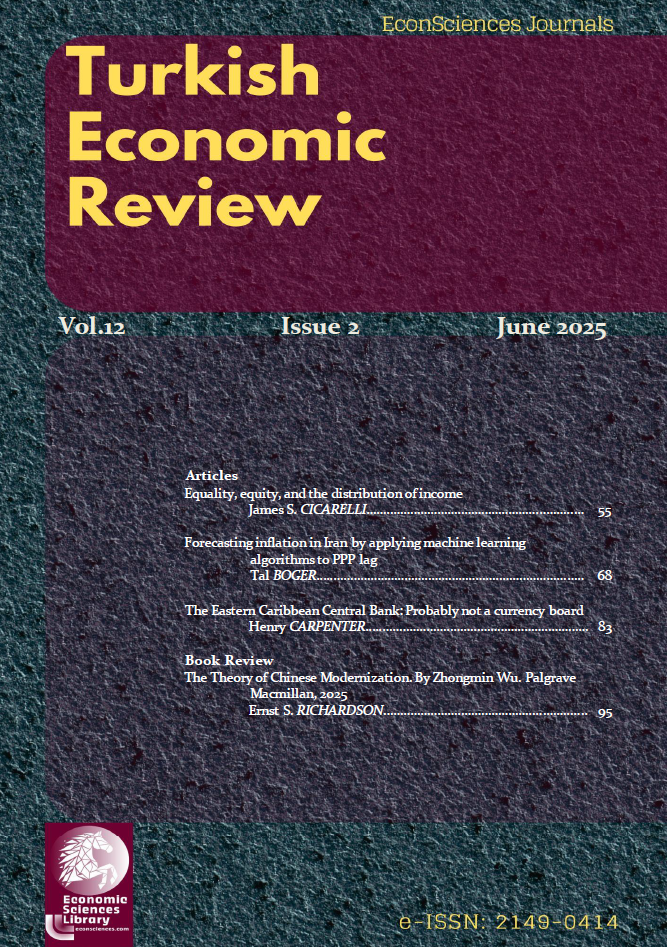Abstract
Abstract. Purchasing Power Parity (PPP) relates the prices of two countries by their exchange rates. Several economists use PPP to measure inflation in the absence of official and accu- rate government reports. In the case of Iran, the government’s official inflation figures are significantly lower than what one would expect given their economic troubles; therefore, we apply PPP to measure inflation in Iran. Because of its volatility in the short-run, PPP is often used as a long-run economic indicator. The main cause for this is that PPP is a leading indicator, creating short-term inaccuracies. However, using machine learning algorithms, we forecast both the time until there is zero PPP lag (i.e. the official and implied inflation rates are equal) and the difference between the official and implied inflation rate (allowing us to predict official inflation rates) for Iran with minimal volatility. This allows us to use PPP accurately over both the short- and long-run.
Keywords: Purchasing Power Parity (PPP); Iranian inflation; Machine learning; Support vector machine; Random forest; k -nearest neighbors; Neural network
JEL. D30; D63; E21.
References
Athey, S. (2018). The impact of machine learning on economics. In A. K. Agrawal, J. Gans, & A. Goldfarb (Eds.), The economics of artificial intelligence: An agenda (pp. 503–543). University of Chicago Press.
Fix, E., & Hodges, J. L. (1989). Discriminatory analysis. Nonparametric discrimination: Consistency properties. International Statistical Review / Revue Internationale De Statistique, 57(3), 238–247.
Hanke, S. H., & Kwok, A. K. F. (2009). On the measurement of Zimbabwe’s hyperinflation. Cato Journal, 29(2), 353–364. https://object.cato.org/sites/cato.org/files/serials/files/cato-journal/2009/5/cj29n2-8.pdf
Ho, T. K. (1995). Random decision forests. Proceedings of the 3rd International Conference on Document Analysis and Recognition (pp. 278–282). IEEE.
McCulloch, W., & Pitts, W. (1943). A logical calculus of ideas immanent in nervous activity. Bulletin of Mathematical Biophysics, 5(4), 115–133. https://doi.org/10.1007/BF02478259
Mullainathan, S., & Spiess, J. (2017). Machine learning: An applied econometric approach. Journal of Economic Perspectives, 31(2), 87–106. https://pubs.aeaweb.org/doi/pdfplus/10.1257/jep.31.2.87
Rogoff, K. (1996). The purchasing power parity puzzle. Journal of Economic Literature, 34(2), 647–668.
Vapnik, V. N., & Lerner, A. (1963). Pattern recognition using generalized portrait method. Automation and Remote Control, 24, 774–780.

This work is licensed under a Creative Commons Attribution-NonCommercial 4.0 International License.
